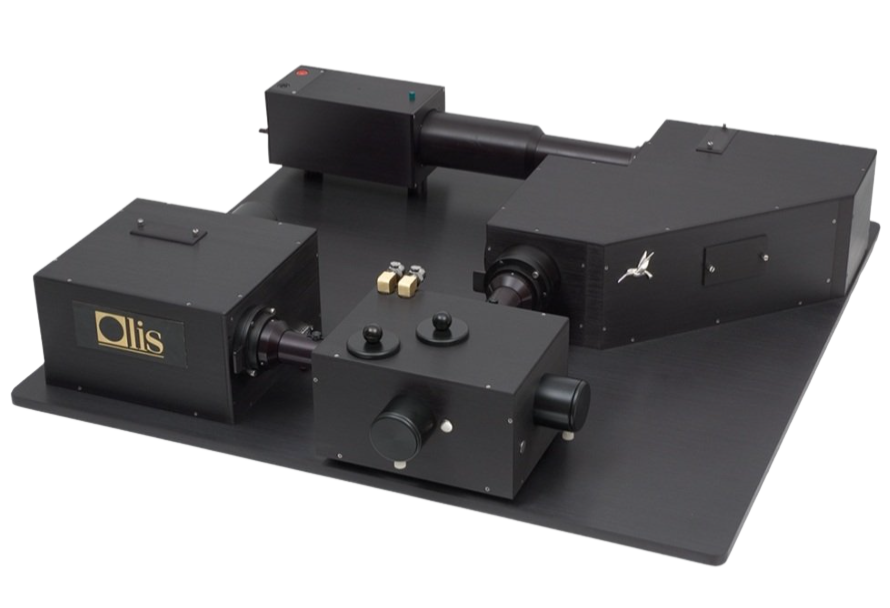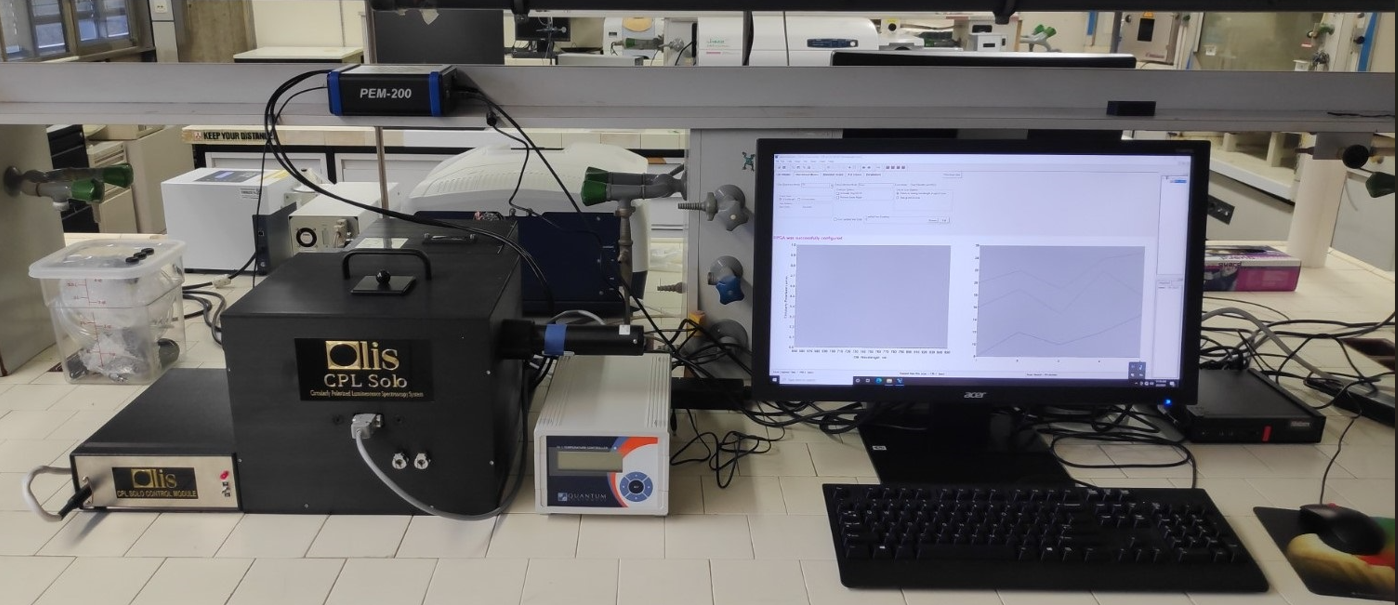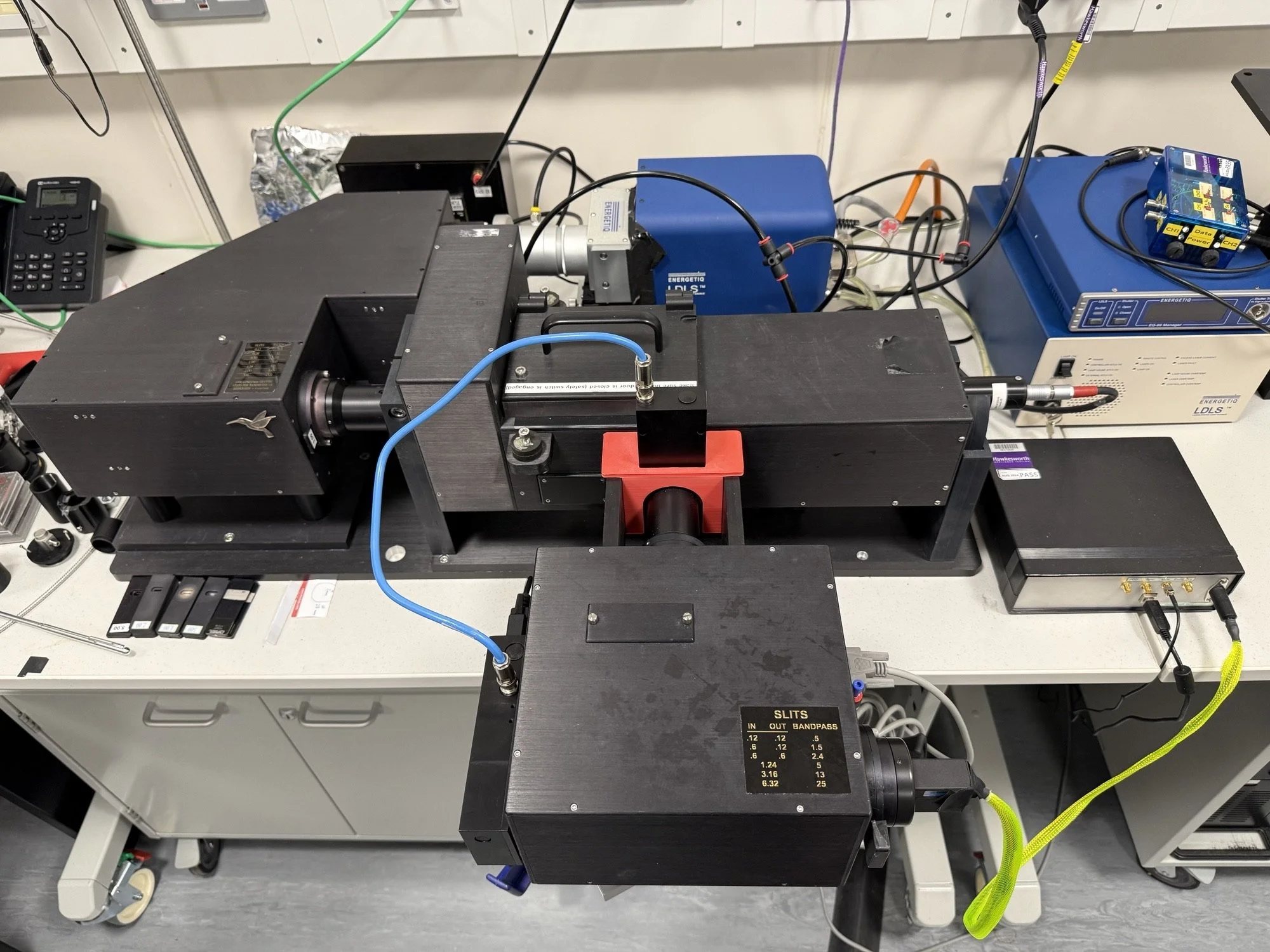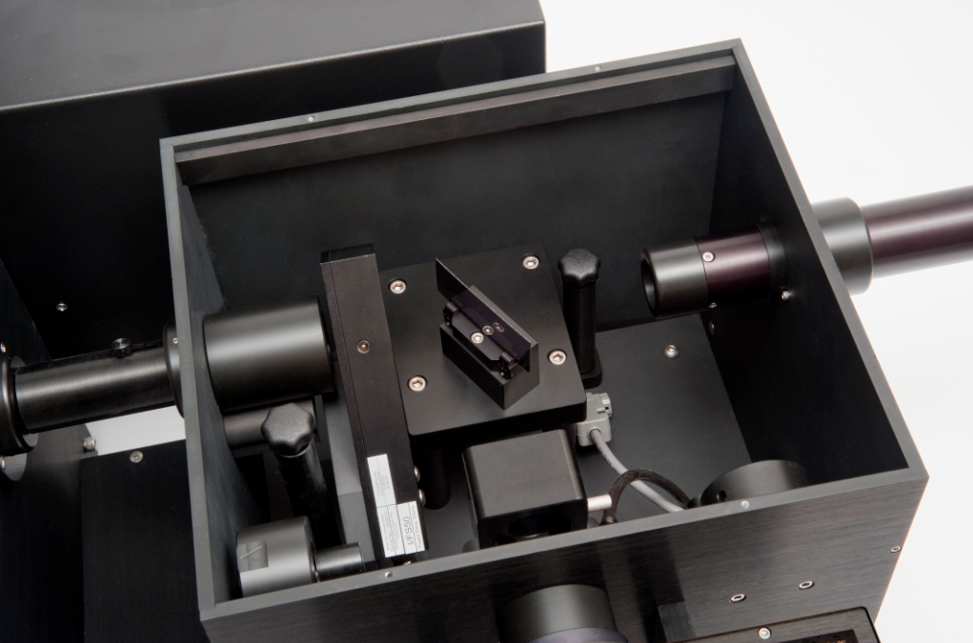
Circularly Polarized Luminescence!
CPL reveals what no other measurement can: the true chiral signature of excited states. Unlock insights invisible to absorption, fluorescence, or CD.
CPL is useful with all emissive chiral sample types such as lanthanides, helicenes, polyfluorenes, supramolecular assembles, gold nanoclusters chiral carbon dots, GFP, and so much more.

Highest Sensitivity, Highest Accuracy CPL Spectrometry Systems. Elegant. Total. Solutions.
OLIS CPLs acquire
Total Emission
LUM(L)
LUM(R)
LPL, Linearly Polarized Luminescence
NPL, Non-polarized Luminescence
CPL, Circularly Polarized Luminescence
Thus giving you access to all the valuable information available from the raw data.
See other videos about OlisWorks, CPL, and more on https://www.youtube.com/@julieanndesalorenz4716/videos
Choose an OLIS for CPL. Or CD and CPL.
-

OLIS CPL Solo UV/Vis, NIR, and IR
Designed for the laboratory which needs a compact and affordable CPL, these small application-specific models feature LED excitation and scanning emission.
Easily enhanced to support photoluminescence lifetime without hardware rearrangement
Select from four models:
CPL Solo UV/Vis, 300-870 nm
NIR CPL Solo, 800-1700 nm
TWIN CPL Solo, 300-1700 nm
IR CPL Solo, 2000-12000 nm (833 -5000 cm-1)
-

OLIS DSM 45 for CPL and Scanning Fluorescence
Designed for the laboratory which needs a premium scanning fluorescence spectrometer and CPL, this compact model features scanning excitation and scanning emission monochromators. It is an OLIS DM 45 with the Polarization Toolbox sample compartment which adds the polarization hardware for CPL.
Easily enhanced to support photoluminescence lifetime without hardware rearrangement
Fluorescence, 200-800 nm (scanning) excitation; 230-870 nm emission
CPL, scanning or (recommended) LED excitation; 350-870 nm emission
-

OLIS DSM 245 with UV/Vis CD
Designed for the laboratory which needs a top performance UV/Vis CD as well as premium scanning fluorescence spectrometer and CPL. This model features a double grating monochromator for CD and a single scanning emission monochromator for fluorescence and CPL.
Easily enhanced to support photoluminescence lifetime without hardware rearrangement
CD 170-700 nm or 220-800 nm
Fluorescence, 200-800 nm (scanning) excitation; 230-870 nm emission
CPL, scanning or (recommended) LED excitation; 350-870 nm emission
Optional: NIR CPL 800-1700 nm
-

OLIS DSM 172 for CD, CPL, Absorbance, and Fluorescence
Designed for the laboratory which needs a top performance UV/Vis/NIR CD as well as premium scanning fluorescence spectrometer and CPL. This model features a prism-grating double monochromator for CD and a single scanning emission monochromator for fluorescence and CPL. Easily enhanced to support photoluminescence lifetime without hardware rearrangement
CD 185-1700 nm or 220-2500 nm
Fluorescence, 200-2500 nm excitation; 230-870 nm emission
CPL, scanning or (recommended) LED excitation; 350-870 nm emission
Optional: NIR CPL 800-1700 nm
II.
VI. Should You Add CPL?
VII. First NIR CPL publication 2023, Transition-Metal Isocorroles as Singlet Oxygen Sensitizers | Inorganic Chemistry
US Patent 6,970.241 B1, assigned to Richard J. DeSa
IX. Groundwork publication, circa 1974: Recording polarization of fluorescence spectrometer. Unique application of piezoelectric birefringence modulation | Analytical Chemistry
XI. Showing the incorporation of a third party cryogenic flask within the OLIS Polarization Toolbox
XII. Customized OLIS DSM 20 CD with CPL Emission Enhancement
Resources
I.
🔬
💎
Research Areas Most Positively Affected
Chiral Photophysics & Photochemistry
– Understanding the origin of circularly polarized emission, energy transfer, and chirality-induced spin effects.
– Relevant for designing circularly polarized OLEDs, lasers, and sensors.Chiral Materials & Optoelectronics
– CPL helps quantify how efficiently materials emit polarized light — crucial for next-gen CP-OLEDs, spintronics, and quantum information devices.Molecular and Supramolecular Chirality Studies
– Reveals how self-assembly or aggregation induces chirality in luminescent systems (e.g., helicenes, chiral nanoparticles, coordination polymers).Bioinspired & Biochemical Systems
– Differentiates protein-bound fluorophores, chiral cofactors, or photosynthetic complexes where excited-state chirality influences function or energy transfer.Asymmetric Synthesis & Catalysis Monitoring
– Enables direct optical probing of enantioselectivity in emissive intermediates or products.
Sample Types That Benefit Most
Helical aromatic compounds (e.g., helicenes, azahelicenes)
Chiral lanthanide complexes (especially Eu(III), Tb(III))
Coordination polymers and MOFs
Chiral organic emitters and TADF molecules
Protein–fluorophore conjugates
Aggregated or self-assembled chiral systems (nanoparticles, gels, films)
Exciton-coupled systems and energy transfer pairs
Thin Film Holder Installed.
The OLIS Polarization Toolbox is the sample compartment used on the
OLIS DSM 45 (shown here) to DSM 172, DSM 245, CPL Solo, and NIR CPL Solo

























